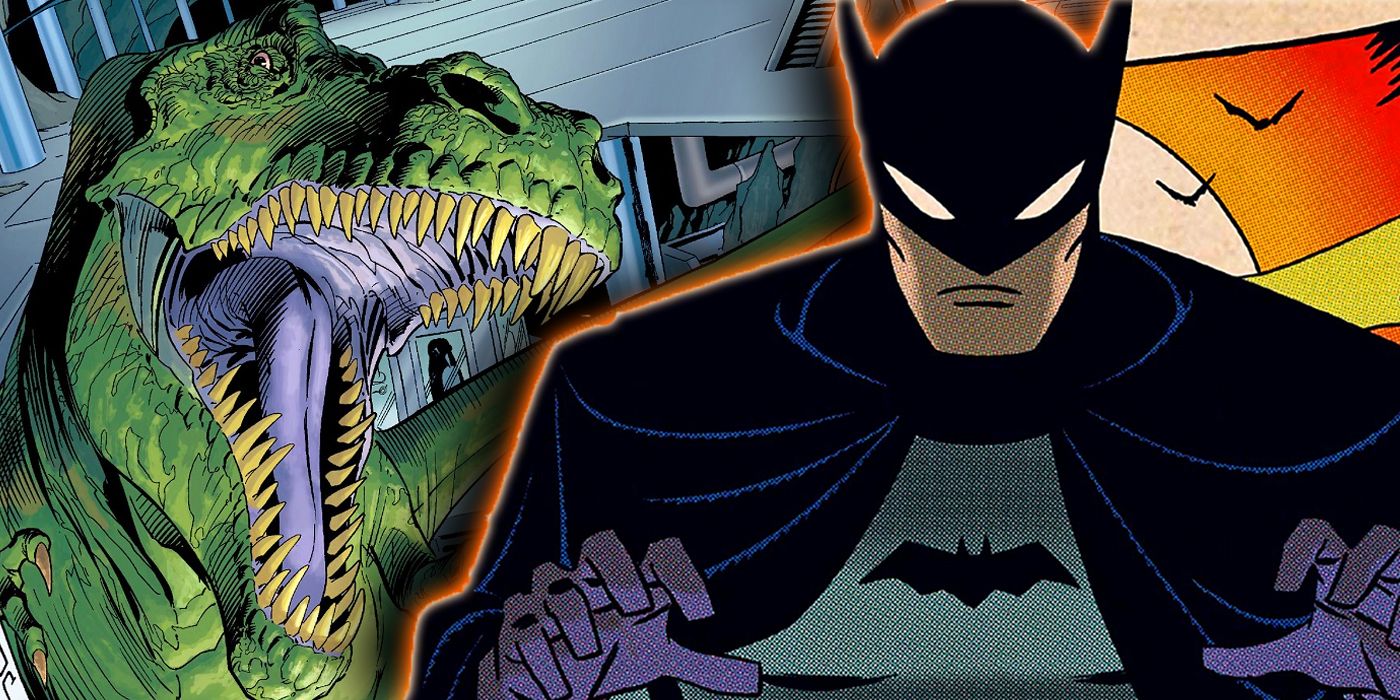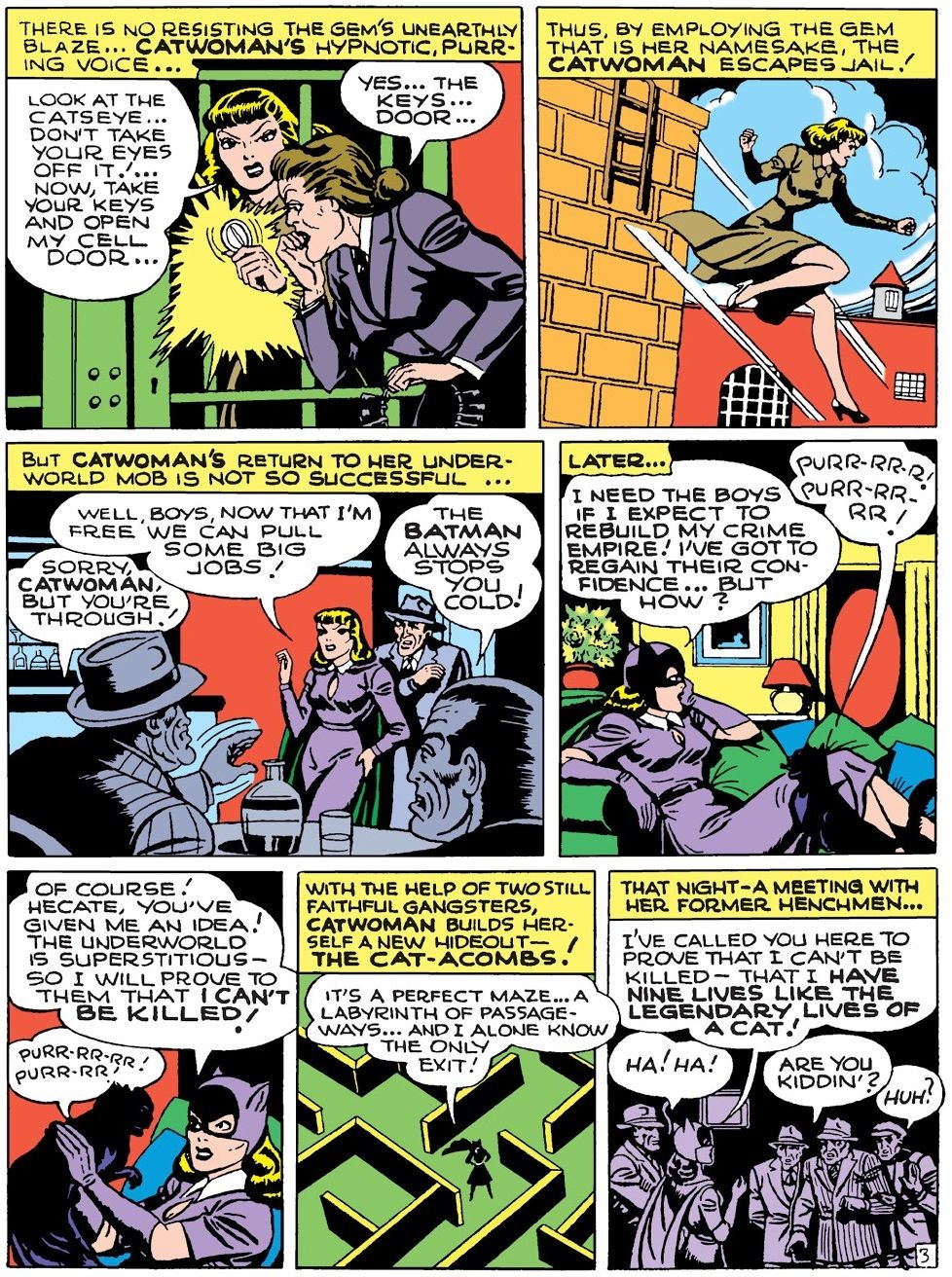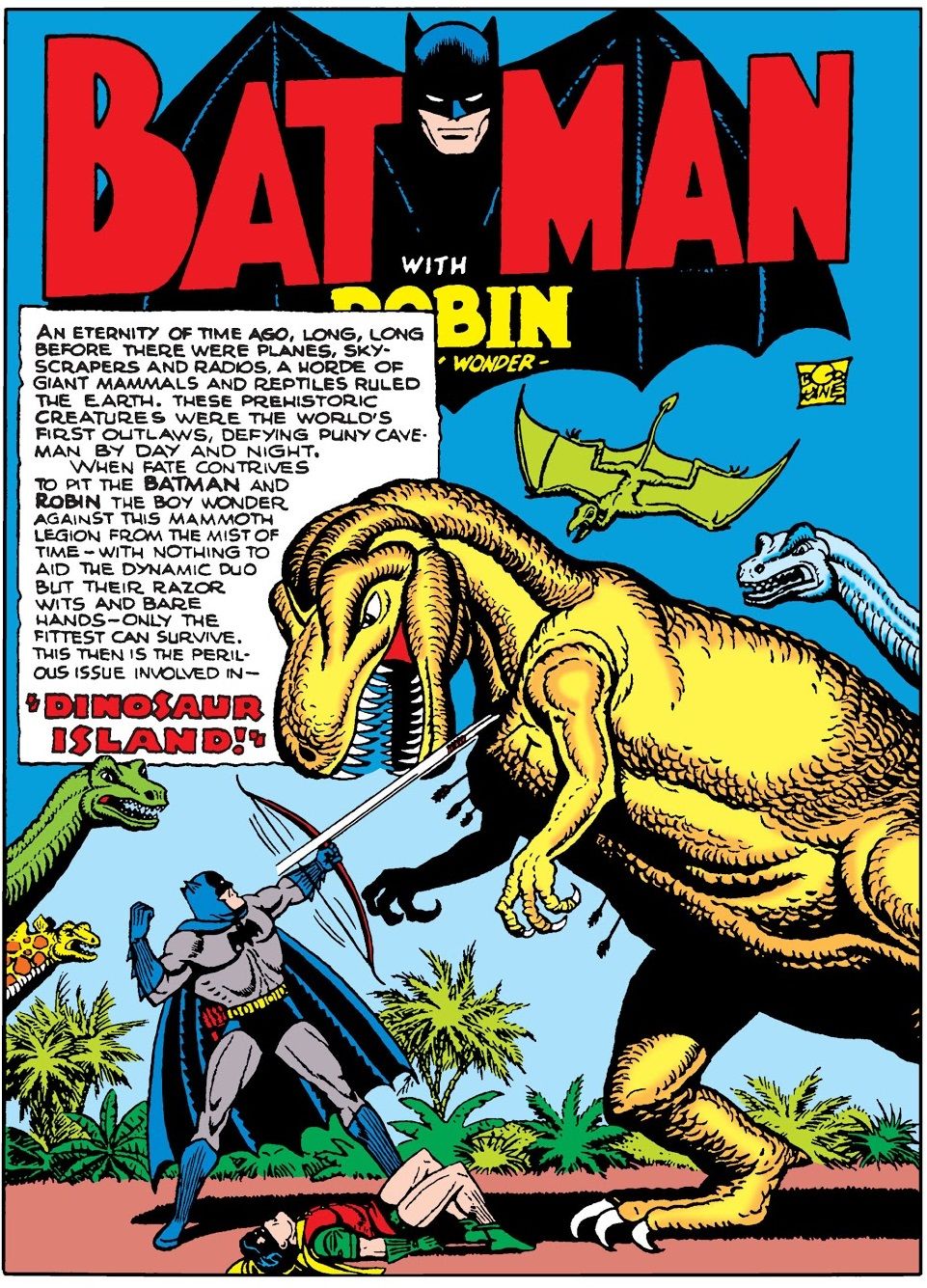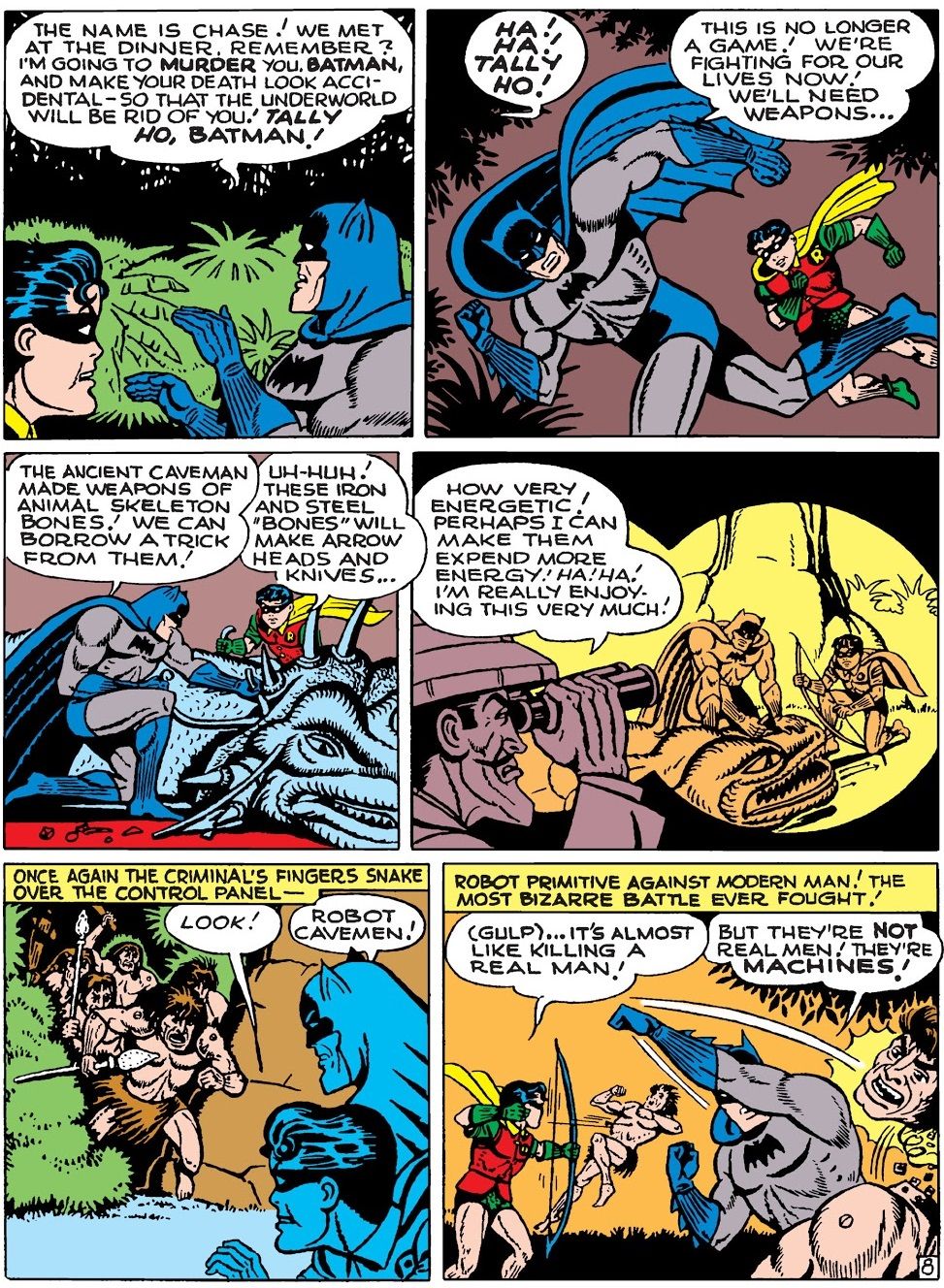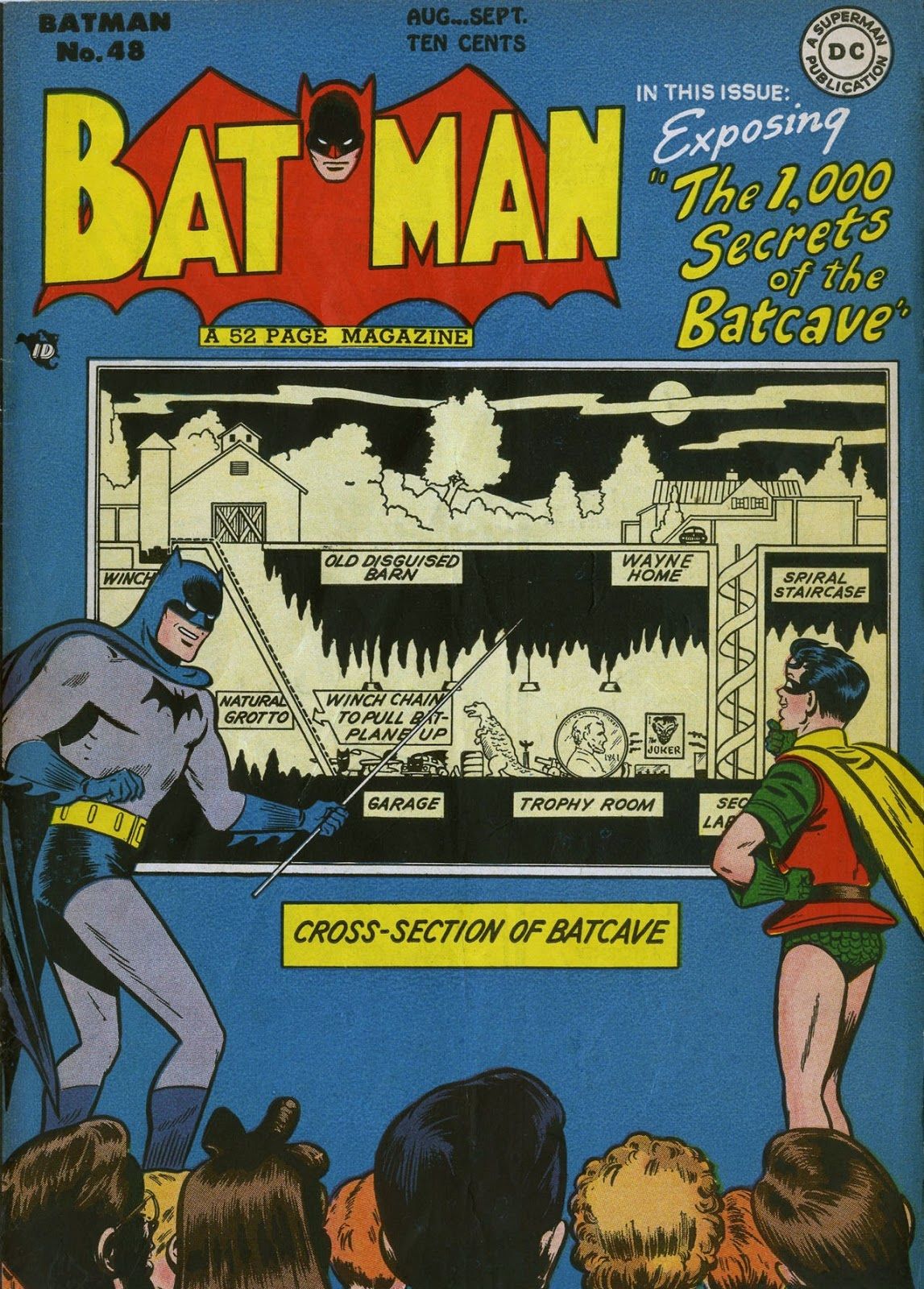Today, we go back to 1946 for the surprising origin of the robot dinosaur that is famously part of Batman's famous Batcave.
This is "Look Back,". The concept is that every four weeks of a month, I will spotlight a single issue of a comic book that came out in the past and talk about that issue (often in terms of a larger scale, like the series overall, etc.). Each spotlight will be a look at a comic book from a different year that came out the same month X amount of years ago. The first spotlight of the month looks at a book that came out this month ten years ago. The second spotlight looks at a book that came out this month 25 years ago. The third spotlight looks at a book that came out this month 50 years ago. The fourth spotlight looks at a book that came out this month 75 years ago. The occasional fifth week (we look at weeks broadly, so if a month has either five Sundays or five Saturdays, it counts as having a fifth week) looks at books from 20/30/40/60/70/80 years ago.
THE SURPRISING CONTINUITY OF EARLY BATMAN STORIES
One of the things that I don't think that modern readers quite understand about the world of the Golden Age is that continuity really wasn't an unusual thing to see present in those stories. It was just a very different sort of continuity. You see, by the time that comic books really blew up in the early 1940s, comic strips had already been very popular for quite some time and while there were obviously many comic strips that were just gag strips, there were just as many that had an ever-evolving narrative. For instance, one of the most popular adventure comic strips of the 1930s, Flash Gordon, had clear continuity in the early years of the strip as Gordon and his friends are transported to the planet Mongo. Generally speaking, it wasn't that a strip's overall narrative would ever be completed, but there was a clear sense that time had passed during these adventures. It wasn't like Flash Gordon would have an adventure over the course of X amount of strips and when that arc ended, have a brand-new, unrelated adventure. They were all loosely connected with a general sense of continuity.
That was the same for a number of comic book features during the Golden Age, especially in the case of Batman, where a single writer, Bill Finger, had an oversized amount of control over the adventures of the Dark Knight. So there WAS continuity between issues, it was just looser than later issues. In fact, in the early days of the Batman solo series, the Joker would die off seemingly every issue and for the first five or six times, Finger would come up with an explanation for how Joker survived his "death" the previous issue. Eventually, he just stopped bothering (and then they stopped "killing him off," removing the need to explain how he survive in his following appearances).
In April 1946's Batman #35, the lead story (by Bill Finger, Bob Kane and Ray Burnley), is actually about how Catwoman has been captured so many times by Batman that when she escapes from prison, no crook will work with her because of all of her defeats. She convinces them to work with her after tricking them into believing that she has literally nine lives...
So right off the bat (no pun intended), we see a story that is based on continuity, namely that Batman keeps on capturing Catwoman. That sense of continuity is what makes the second story in the issue so important.
BATMAN GOES TO DINOSAUR ISLAND
In the second story (story by Finger, art by Paul Cooper and Ray Burnley), Batman and Robin agree to a challenge to benefit charity. They will go to "Dinosaur Island," a spectacle designed by a master showman Murray Wilson Hart and compete against the robotic dinosaurs and cavemen controlled by big game hunter, Mr. Breach, to prove that they're the best hunters around by "tagging" the robot dinosaurs without the use of any of their weapons from their utility belts (or the belts themselves). Another big game hunter, though, Stephen Chase, decides to use this opportunity to sneak on to the island, knock Breach out and use the robot dinosaurs and cavemen to kill Batman and Robin!
There's a twisted scene where Batman and Robin have to fight back against the robot cavemen where Robin notes how much it feels like they're killing actual people in this fight...
In the end, Batman and Robin devise a plan where they use the hide of a robot Pterodactyl to create a hang glider that Robin uses to drop waterbombs onto the dinosaurs controlled by Chase, short-circuiting his control of the dinosaurs. We then learn Chase's reasons for wanting them dead. He had decided to form a gang in Gotham and he assumed that it would go easier if he killed of the Dynamic Duo first.
Okay, so that's the end of the story, but sure enough, 13 issues later, the cover of Batman #48 shows the secrets of the Batcave and now one of the robot dinosaurs from Dinosaur Island is on display in the Batcave...
That must have been an interesting conversation, no? "Well, you see, since your island almost killed me and Robin, we would like to bring one of your robot dinosaurs home with us." How would they even pull that off? Did Bruce Wayne and Dick Grayson just drag it through Wayne Manor?
If you folks have any suggestions for May (or any other later months) 2011, 1996, 1971 and 1946 comic books for me to spotlight, drop me a line at brianc@cbr.com! Here is the guide, though, for the cover dates of books so that you can make suggestions for books that actually came out in the correct month. Generally speaking, the traditional amount of time between the cover date and the release date of a comic book throughout most of comic history has been two months (it was three months at times, but not during the times we're discussing here). So the comic books will have a cover date that is two months ahead of the actual release date (so October for a book that came out in August). Obviously, it is easier to tell when a book from 10 years ago was released, since there was internet coverage of books back then.

